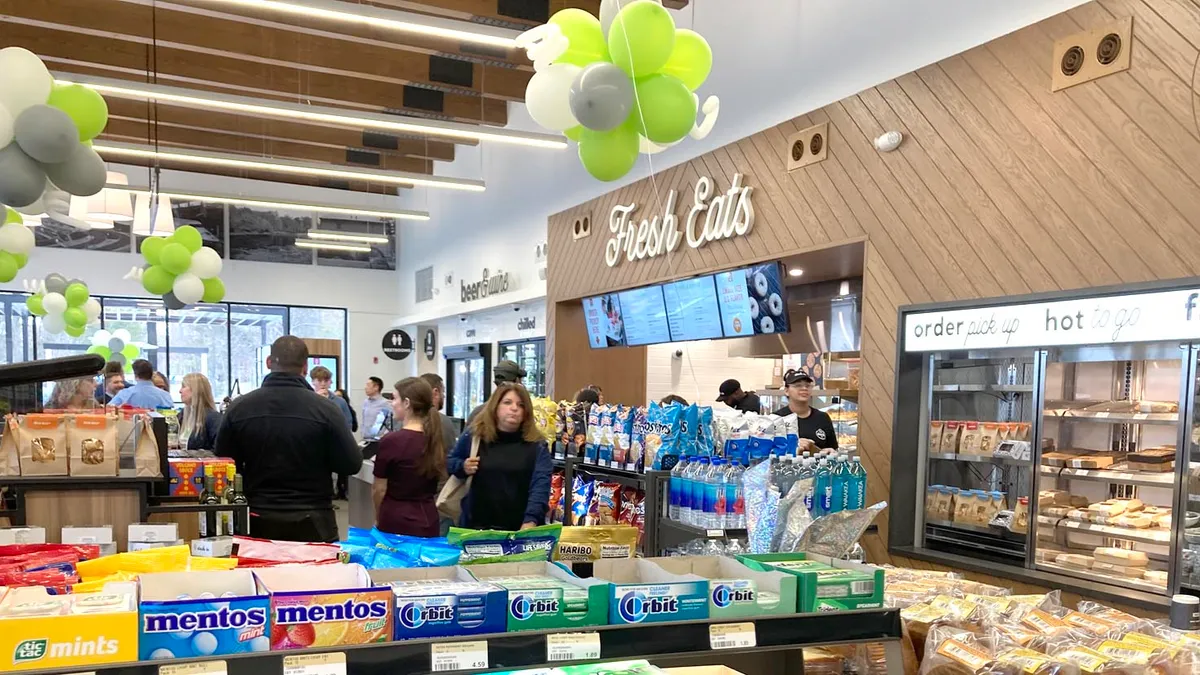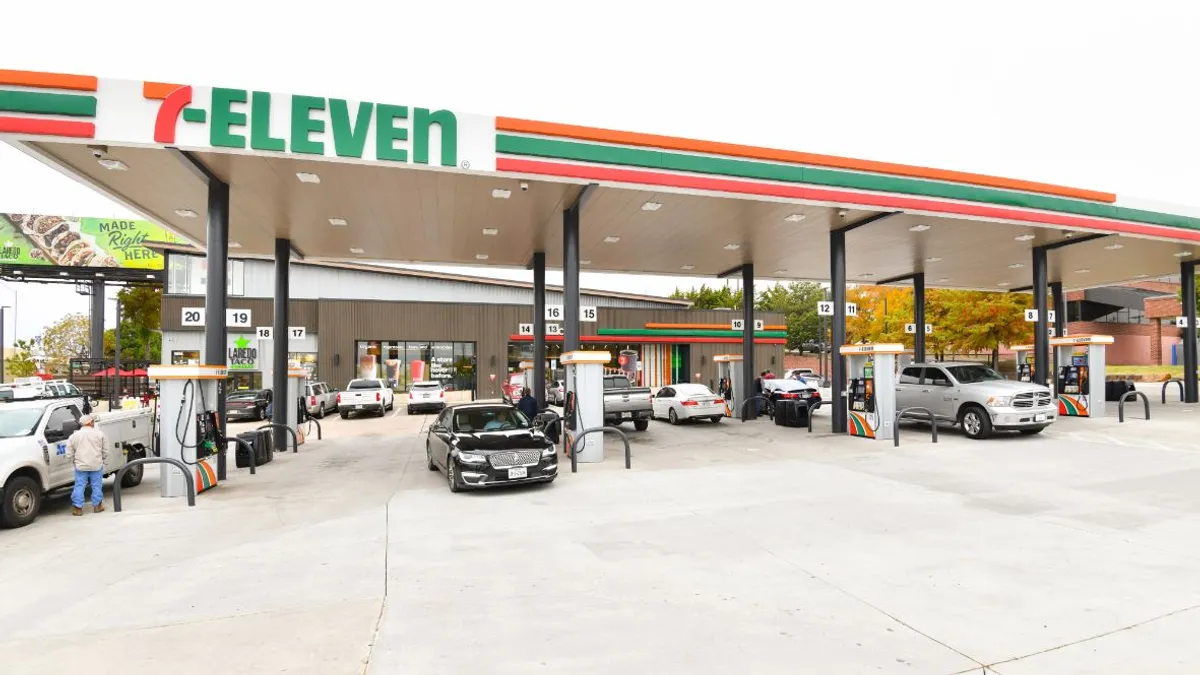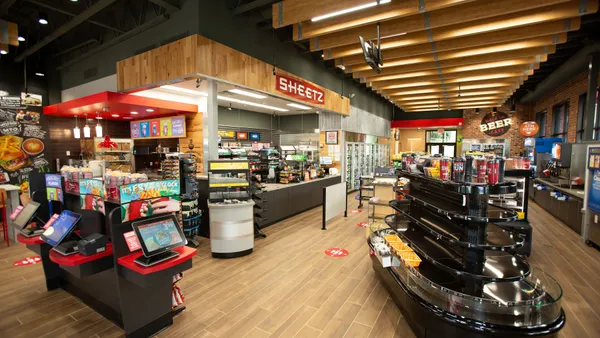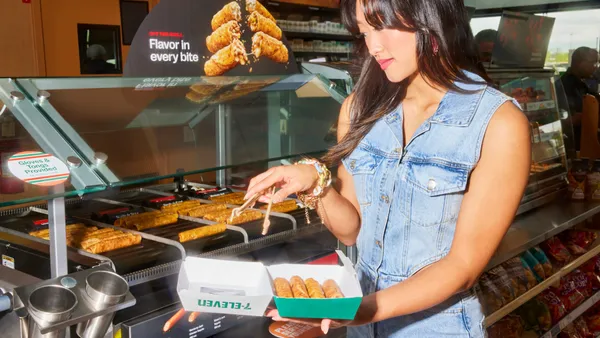There’s no missing the big changes in the convenience store industry over the past few years. Companies like Wawa and Buc-ee’s are forging their way to new states, while others such as Mountain Express and Foxtrot have gone bankrupt. Fuel sales continue to struggle post-COVID-19 while foodservice grabs an expanding spotlight.
It’s a lot to take in.
To help break things down, C-Store Dive sorted through NACS and NielsenIQ data from the last three years and pulled out some of the most interesting data points to share — starting with a quick look at the sales data.
The evolution of c-store sales
There’s no question that gasoline is a massive revenue driver for c-stores. But with the advent of the COVID-19 pandemic, c-stores became a lifeline for food, snacks and other items in a quick and easy format. And some companies are focused on being seen as a restaurant just as much as — if not more than — a gas station.
Add in the looming changeover to electric vehicles, which threatens to put a big hole in fuel sales, and it’s understandable why some companies increasingly emphasized inside sales.
For instance, Arko Corp. and its c-store arm, GPM investments, saw its merchandise contribution grow almost 10% in the first quarter, according to its earnings report. The convenience retailer has reiterated over the past year that it’s focused on on increasing inside sales in several key categories: candy; beer; sweet, salty and alternative snacks; and packaged beverages.
Inside sales are increasingly important
Inside sales grew over 8% year over year in both 2022 and 2023, according to NACS data. While this is notable, it’s also important to remember that inflation pushed up prices and boosted c-store revenues over the past year.
The competitive landscape continues to shift
While more than 10% of all convenience stores in the U.S. can be found in Texas, the fastest-growing part of the country for independent retailers has lately been the Northeast, according to NACS data. That area includes all of New England as well as New York, Pennsylvania, Delaware, Maryland, Virginia and West Virginia.
The number of independent c-stores in that region reached 19,710 by the start of 2024, up close to 3% compared to the same point a year prior. That was nearly double the gains of any other geographic area.
Only one area, Central — which includes Montana, the Dakotas, Minnesota, Wyoming, Colorado, Nebraska, Kansas, Iowa and Missouri — lost independent stores from the start of 2023 to the start of 2024, NACS data showed.
The industry’s largest players have been among its fastest growing, although there are some exceptions.
Top companies grow in some areas, pull back in others
Major growth didn’t just come from the largest companies. For example, the acquisition of Kum & Go doubled Maverik’s size and pushed it into the top 10 of the NACS 100. A little further down the list, Majors Management used a number of acquisitions in 2023 to more than double its store count, making it one of the fastest growing c-store companies last year.
Majors Management grew from 125 stores at the end of 2022 to more than 300 in 2023, thanks largely to buying the bulk of MAPCO in a joint deal with Circle K, according to the NACS Top 100 data for those respective years.
Where Majors Management grew and shrank in 2023
The company wasn’t even on the NACS top 100 in 2022, and CSP’s top 202 list for that year noted the company had about 60 sites, meaning that it has more than doubled its store count in two consecutive years.
In 2023,Majors gained sites in all but one region of the United States, with the biggest gains coming in the Southeast.
The world of independent c-stores
Zooming out, while the exact numbers vary, the general makeup of c-store ownership has remained consistent over the past few years. At last count, more than 63% of c-store companies have between one and 10 locations, according to data from the 2024 NACS/NIQ Convenience Industry Store Count.
C-store companies tend to be either tiny or massive
Owners with more than 500 sites made up the second-largest cohort with around 22% of the nation’s locations, with the rest falling in between.
This data shows the incredibly fragmented nature of the c-store industry. But it doesn’t show just how many operators owned only one store.
Nearly 92,000 of the roughly 96,000 sites in the smallest group were single-store operators, according to data from the start of 2024.












